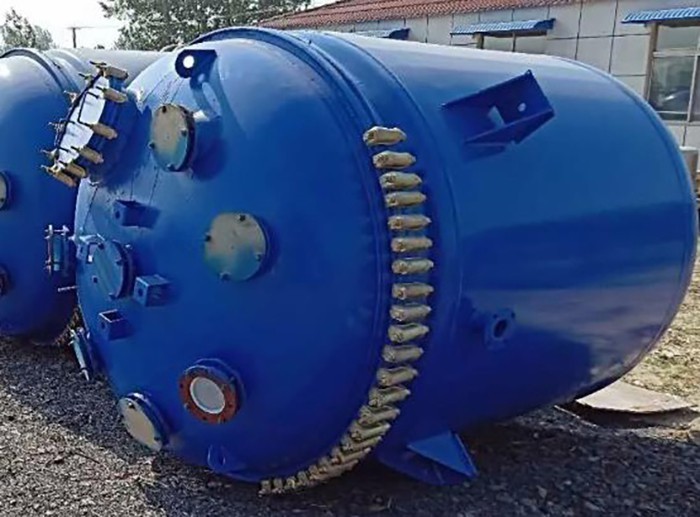Glass lined reactors play a core role in many industrial fields such as chemical,pharmaceutical,pesticide,dye,etc.due to their excellent corrosion resistance,good chemical stability,and excellent thermal conductivity.Whether it is material reactions in strong acid and alkali environments,or process treatments under high temperature and high pressure conditions,glass lined reactors can provide a safe,effective,and controllable environment for chemical reactions with their unique enamel coating and metal substrate composite structure.However,different industrial scenarios have varying requirements for the structure,function,and process adaptability of reactors.Understanding the classification and characteristics of glass lined reactors is crucial for scientific selection,optimization of process flow,and improvement of production efficiency and product quality.
1.Types of glass lined reactor
(1)Open type glass lined reactor
1.Structural features:The open glass lined reactor consists of a tank body,a stirring device,a transmission device,a sealing device,etc.The top of the tank body is an open design,only covered by a flange cover or a simple sealing structure.This structure facilitates direct observation of the reaction inside the tank by operators,as well as facilitating operations such as feeding,sampling,cleaning,and equipment maintenance.
2.High operational convenience:In processes that require frequent feeding,sampling,or cleaning of residues in tanks,open reactors can significantly shorten operating time and improve production efficiency.For example,during laboratory research and development or small-scale trial production,researchers can observe the reaction process at any time and adjust process parameters in a timely manner.
3.Relatively low cost:Due to its relatively simple structure,the manufacturing and maintenance costs of open reactors are usually lower than those of closed reactors,making it suitable for production scenarios with strict cost control.
4.Limitations:The open structure of the types of types of glass lined reactor makes it easy for the medium inside the tank to come into contact with the external environment,and materials with strict requirements for the reaction atmosphere or strong volatility are prone to environmental pollution and material loss,and there are certain safety hazards.

(2)Closed glass lined reactor
1.Structural features:The closed types of glass lined reactor tank is a fully enclosed structure,formed by welding or bolt connection to form a closed space,equipped with professional sealing devices to ensure complete isolation of the medium inside the tank from the outside world.Its top is usually equipped with multiple interfaces for installing mixing devices,temperature and pressure measuring instruments,feeding and discharging pipelines,and safety accessories.
2.Excellent safety and environmental friendliness:The fully enclosed design can effectively prevent the leakage of toxic,harmful,flammable,explosive,and highly volatile materials,ensuring the safety of operators and a clean production environment,in compliance with strict environmental and safety production standards.In chemical production,closed reactors are equipment when dealing with highly toxic chemicals or high-risk reactions.
3.Wide process adaptability:able to adapt to high temperature,high pressure,negative pressure and other process conditions,meeting the needs of complex chemical reactions.For example,in high-pressure hydrogenation reactions,high-temperature polymerization reactions,and other processes,closed reactors can ensure stable and safe reaction processes.
4.High degree of automation:It is easy to integrate automation control systems,achieve control of reaction temperature,pressure,stirring speed and other parameters,and improve the stability of the production process and the consistency of product quality.
There are various types of glass lined reactors,each with its own characteristics in terms of structural form,functional use,and process adaptability.In the selection process of chemical enterprises,it is necessary to comprehensively consider various factors such as their own production process requirements,material characteristics,safety and environmental protection requirements,investment budget,etc.,and match reactor types to fully leverage the performance advantages of glass lined reactors,achieve optimization of production processes,and maximize production efficiency.With the continuous development and innovation of chemical technology,glass lined reactors will continue to evolve towards large-scale,intelligent,and green directions,providing stronger equipment support for the sustainable development of various industries.

 Address:Zibo City, Shandong Province
Address:Zibo City, Shandong Province WhatsApp:+8615653328535
WhatsApp:+8615653328535 Wechat: +8615965331535
Wechat: +8615965331535  E-mail:zs@sdsmachinery.com
E-mail:zs@sdsmachinery.com